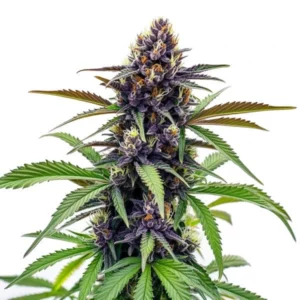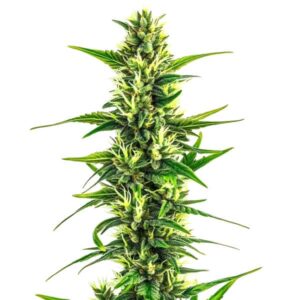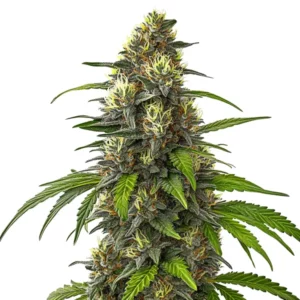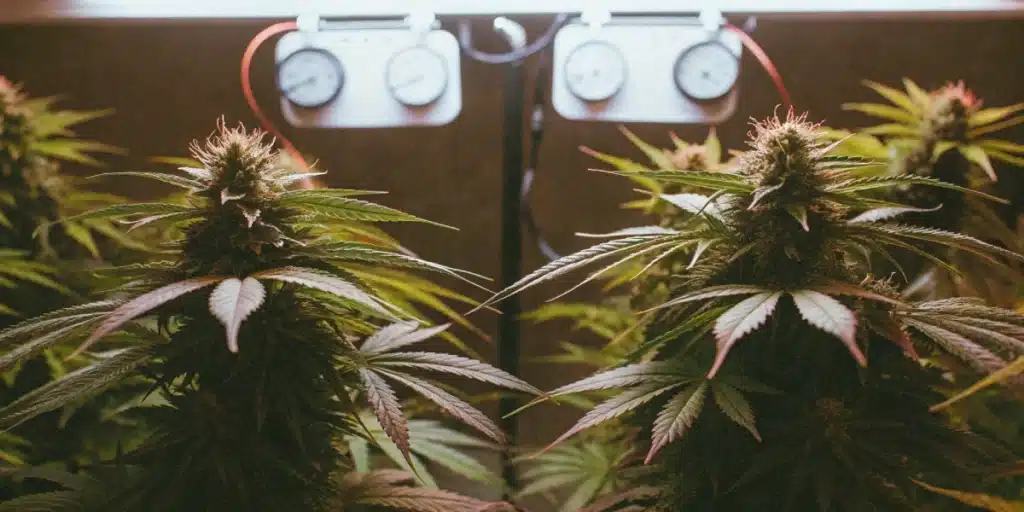
Autoflower Week 9: What to Expect and How to Maximize Your Harvest
An autoflower’s life cycle generally ranges from 8 to 12 weeks from seed to harvest, though this can vary by strain. Understanding autoflower by week helps growers track each phase more effectively, from germination to harvest. Key stages include germination (1–3 days), vegetative growth (weeks 1–3), and a pre-flowering/flowering stage that begins around weeks 3–5 and continues until harvest. During the final weeks, closely monitor the autoflower by week progression watch for signs of maturity like amber pistils and trichomes to determine the best time to harvest.
Stepping into Autoflower Week 9 is an exciting phase where every grower eagerly anticipates the climax of their autoflower cycle.
Recommended Strains
Black Cherry Soda
|
|
THC | 15% - 20% (Medium) |
|
|
Type | Feminized |
|
|
Yield | Low |
|
|
Phenotype | 50% Indica / 50% Sativa |
Black Domina
|
|
THC | 15% - 20% (Medium) |
|
|
Type | Feminized |
|
|
Yield | High |
|
|
Phenotype | 95% Indica / 5% Sativa |
For those dedicated to online seed purchasing, relying on digital seed banks can provide you with a diverse range of genetics that perform brilliantly under well-managed conditions. This guide dives deep into the specifics of Autoflower Week 9, ensuring you have all the knowledge you need to maximize your harvest while keeping the vibe professional yet fun.
Overview of Week 9 in Autoflower Growth
During this phase, your autoflowers have matured significantly and the focus shifts from rapid growth to bud refinement. Energy is redirected toward producing dense buds, abundant resin, and a robust terpene profile.
The plants are now entering a critical time frame where every environmental tweak matters. Online seed shopping gives you access to strains optimized for this stage, making it easier to achieve that peak performance during Autoflower Week 9.
Final Stage of Growth
This stage marks the climax of bud development, with the plant concentrating its resources on finishing touches. The energy shifts from expanding foliage to maximizing resin production and terpene enhancement.
For growers, especially those who buy seeds online, choosing strains that are known to perform exceptionally well during this final phase can make a huge difference. Small adjustments in light and nutrients now have a major impact.
Common Signs That Your Plant is Ready for Harvest
Visual indicators are key during Autoflower Week 9. When trichomes shift from clear to a milky white with hints of amber, it’s a strong sign that the buds are nearing their prime.
Other noticeable changes include a deepening of pistil colors and an increase in bud density. These signs provide a clear signal that your plants are approaching the optimal harvest time.
Promos & Deals
Is Week 9 the End for All Strains? (Differences by Strain)
Not all strains follow the exact timeline. Some autoflower varieties might continue to develop even past Week 9, while others could reach their peak earlier. Genetics play a huge role here.
Environmental conditions and specific cultivation techniques further influence each strain’s progress. When you order your seeds online, check out the strain-specific timelines provided to better plan your harvest.
Identifying Maturity and Ripeness
Knowing exactly when your plants are at their peak is both an art and a science. Autoflower Week 9 is all about fine-tuning your observation skills to catch subtle cues of ripeness.
From changes in trichome color to shifts in pistil hues, each detail offers insight into the best time to harvest. Online seed sources often include detailed guides that help you interpret these signals.
Trichomes: The Key to Timing Your Harvest
Trichomes are the tiny, crystal-like structures that pack most of the plant’s potency. Their transition from clear to milky, and finally to amber, is a clear indicator of maturity.
Monitoring trichome development in short, regular intervals helps you decide on the perfect moment for harvest. Many online seed providers highlight strains with consistent trichome patterns during Autoflower Week 9.
Pistil Color Changes and What They Mean
Pistils start off as white and gradually darken as the plant matures. In Autoflower Week 9, a significant darkening of these hair-like structures usually aligns with peak bud quality.
This change, combined with trichome observations, gives you a fuller picture of your plant’s readiness. Keeping a close eye on these details can prevent premature or delayed harvesting.
Avoiding Premature or Late Harvesting Mistakes
Harvest timing is a delicate balancing act. Harvest too early, and you risk underdeveloped potency; wait too long, and you may encounter degraded flavors or over-mature buds.
By regularly inspecting trichome clarity and pistil color, you can pinpoint that ideal window. Detailed online guides from trusted seed banks can be invaluable in avoiding common pitfalls during Autoflower Week 9.
Nutrient and Watering Strategies for Week 9
As the plants enter their final stage, nutrient and watering strategies need careful adjustment. The goal is to support the bud’s final burst of growth without overwhelming the plant.
Properly managing water and nutrient intake now is essential for developing that rich resin profile. Online seed resources often include tailored feeding schedules to help you through Autoflower Week 9.
Flushing: When and Why You Should Do It
Flushing involves running plain water through your growing medium to eliminate excess salts and nutrients. This practice enhances the natural flavors of your buds by removing chemical residues.
Timing is everything flush too early and you may deprive the plant of vital nutrients, flush too late and the buildup may affect taste. Most experts recommend a flush about a week before harvest for optimal results.
Optimal Watering Practices During the Final Week
Watering needs change as the plants approach harvest. Consistent moisture without oversaturation is key to supporting bud development while avoiding root stress.
Using a controlled watering schedule helps maintain an even pH and ensures that your plant absorbs just the right amount of water. Adjust your schedule during Autoflower Week 9 to accommodate these final needs.
Reducing or Adjusting Nutrients at This Stage
It’s important to gradually reduce nutrient concentration as the plants enter their final growth stage. This reduction helps the plant shift focus from nutrient absorption to resin production.
A slow taper of nutrients minimizes the risk of nutrient burn and supports a smooth transition into harvest. Detailed feeding recommendations are often provided by online seed banks, ensuring you get it right during Autoflower Week 9.
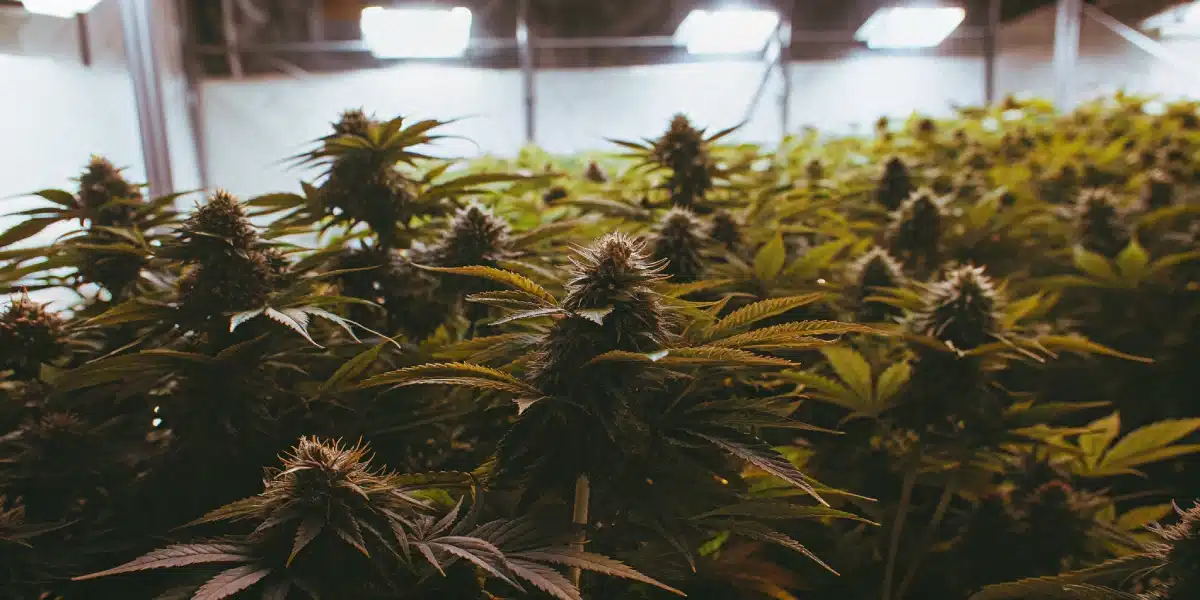
Environmental Factors to Monitor in Week 9
The environment becomes a critical factor in achieving a high-quality harvest. In Autoflower Week 9, small fluctuations in temperature, humidity, and airflow can make a significant difference.
Maintaining a controlled setting minimizes risks like mold and mildew while optimizing bud density and resin development. Online resources often provide guidelines tailored to this final stage, giving you confidence in your environmental management.
Ideal Temperature and Humidity Levels
Optimal temperature and humidity levels are essential in ensuring slow, steady bud development. A slightly cooler environment combined with moderate humidity can extend the flowering period just enough to improve resin quality.
Too high or too low temperatures can stress the plant and compromise bud formation. Striking the right balance during Autoflower Week 9 is key, and many online guides offer specific numbers to aim for.
Light Cycle Adjustments and Recommendations
Light plays a crucial role as plants complete their life cycle. During Autoflower Week 9, adjusting the light cycle whether by lowering intensity or increasing the distance between the light and canopy can encourage optimal resin production.
These tweaks help reduce the risk of light burn while promoting even bud development. Online seed banks often share light cycle recommendations that have been proven effective for various strains.
Air Circulation and Odor Control
Proper air circulation ensures that heat and humidity are evenly distributed throughout your grow space. Good airflow reduces the risk of mold and keeps the environment fresh.
At the same time, odor control is important, especially for indoor grows. Tools like activated carbon filters or ozone generators help maintain discretion while ensuring your buds develop without unwanted environmental stress.
Maximizing Resin Production and Potency
The final phase is all about maximizing resin output and potency. Autoflower Week 9 offers a prime opportunity to fine-tune your growing techniques for enhanced THC and terpene levels.
Careful attention to stress techniques and environmental factors can lead to a yield that is both potent and aromatic. Online seed options often include strains with genetic predispositions for high resin production.
Stress Techniques to Boost THC Levels
Controlled stress can prompt your plants to produce more resin, thereby boosting THC levels. Techniques such as low-stress training or slight water deprivation can be effective when applied correctly.
It’s important not to overdo it, as too much stress can harm the plant. A balanced approach during Autoflower Week 9 can trigger natural defense mechanisms without compromising plant health.
Factors That Influence Terpene Profiles
Terpenes contribute significantly to the aroma and flavor of your buds. Their production is influenced by genetics, nutrient availability, and environmental conditions.
Maintaining optimal conditions during Autoflower Week 9 can enhance terpene profiles and result in a richer sensory experience. Many online seed guides provide detailed insights into how each strain develops its unique aroma.
Avoiding Over-Stress in Autoflowers
While some stress can be beneficial, over-stressing your plants may lead to nutrient deficiencies and compromised bud quality. It is vital to keep stress levels moderate and controlled.
Monitoring your plants closely and adjusting stress techniques incrementally can help maintain plant health. Reliable online seed resources often offer strain-specific advice to avoid pushing your autoflowers too far.
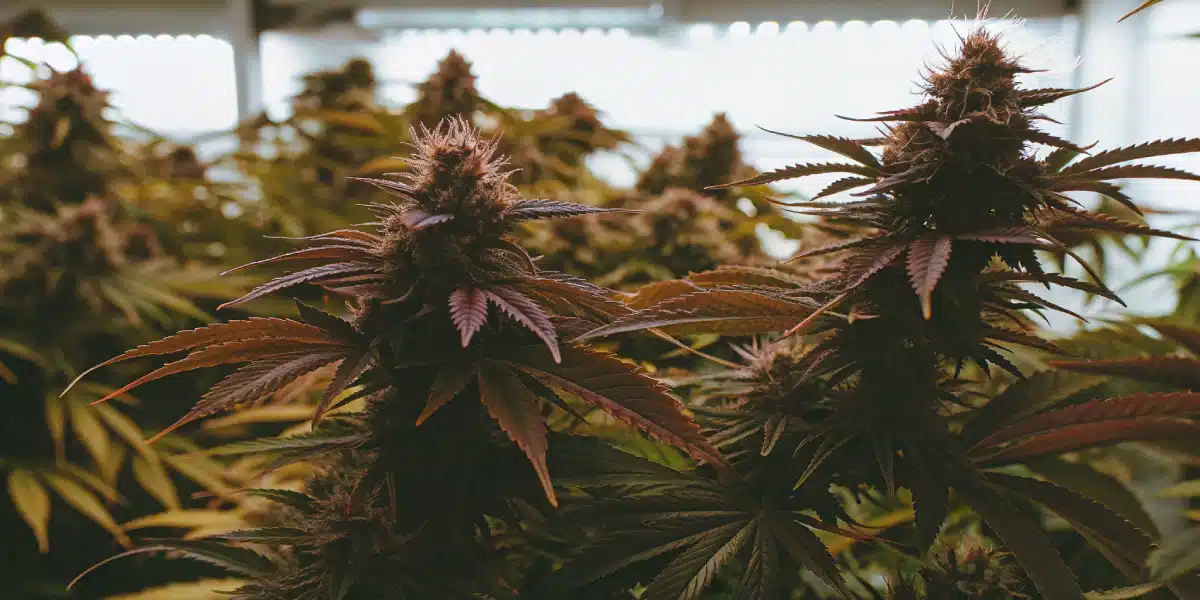
Preparing for Harvest Day
Preparation becomes essential as you approach harvest day. Every detail from the tools you use to the layout of your drying space plays a role in the final quality of your buds.
Organizing your harvest strategy ahead of time ensures that all processes run smoothly. Many online seed banks provide comprehensive guides that include practical tips for setting up an efficient harvest environment.
Tools and Equipment You’ll Need
Having the right tools can make harvest day run much smoother. Essential items include sharp trimming scissors, gloves, a magnifying glass, and clean containers for collecting your buds.
These tools help ensure precision during trimming and preserve as much of the precious resin as possible. Preparing your equipment in advance minimizes stress on both you and your plants.
How to Perform a Test Cut to Check Quality
Before diving into a full harvest, performing a test cut can reveal a lot about the overall quality of your buds. A small sample allows you to check trichome development, aroma, and potency.
This step helps you decide whether to adjust your timing or proceed with the full harvest. Many online guides suggest doing a test cut to ensure you are harvesting at the perfect moment during Autoflower Week 9.
Planning Your Drying Space
After harvesting, planning an effective drying space is key to preserving the quality of your buds. A well-ventilated area with controlled temperature and humidity prevents issues like mold.
Setting up racks or lines in a dedicated drying space ensures even airflow and a gradual drying process. Online resources often provide tips and layouts to help you create an ideal drying environment.
FAQs About Autoflower Week 9
These frequently asked questions address common concerns and uncertainties during the final stage of autoflower growth. They offer practical solutions based on proven techniques.
Answers to these questions help you refine your approach and ensure you are well-prepared for every aspect of Autoflower Week 9. Trusted online seed guides often include similar Q&As for added clarity.
Can I Still Fix Issues During Week 9?
Minor issues can still be addressed during this final phase. If you notice slight imbalances or stress signs, small adjustments in watering or light positioning might help.
However, be cautious when making changes as large modifications can upset the delicate balance your plants have achieved. Many online seed guides advise incremental tweaks rather than dramatic interventions.
What Happens if I Delay Harvesting Too Long?
Delaying the harvest can lead to a decline in bud quality. Extended waiting may cause trichomes to degrade and reduce overall potency.
Additionally, overripe buds can become harsher to smoke and may even risk mold development under fluctuating conditions. Online seed recommendations stress the importance of timing in Autoflower Week 9.
Is It Safe to Use Bud Boosters This Late?
Using bud boosters at this stage requires caution. Although they might enhance bud density, applying them too late in the cycle can disrupt the plant’s natural finish.
It is generally safer to rely on the plant’s genetic potential and well-managed environmental conditions. Trusted online seed banks often provide guidance on whether bud boosters are advisable during Autoflower Week 9.
Embracing Autoflower Week 9 means committing to precision and patience during these final stages. With careful attention to environmental factors, nutrient adjustments, and stress techniques, your plants will reward you with a harvest full of potent, aromatic buds.
Choosing to purchase seeds online offers a unique advantage with access to premium genetics and expert growing guides, ensuring that every aspect of your grow is supported for maximum success.


